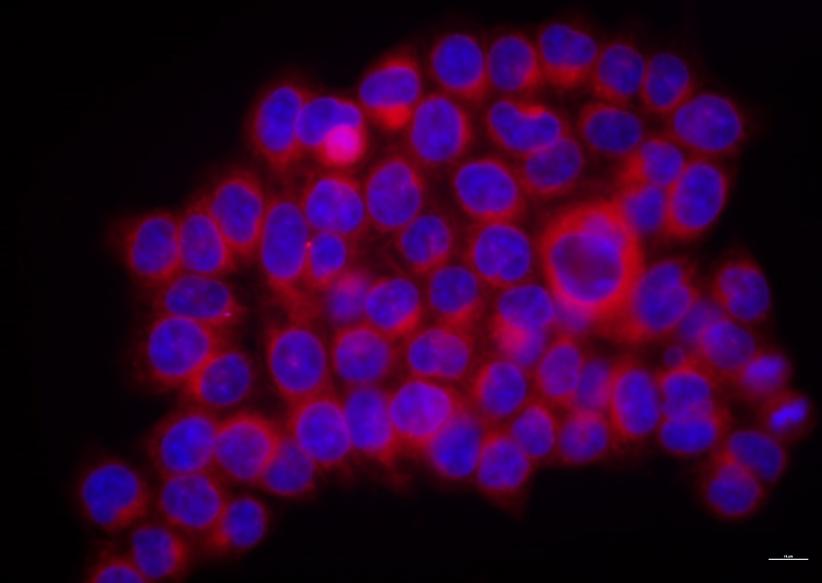A fresh look at the role of probiotic yeast in treatment
Specialists from the Faculty of Chemistry at WUT and the Centre for Advanced Materials and Technologies (CEZAMAT) are researching probiotic yeast to see if it can be reprogrammed so that its extracellular vesicles can become an enteral drug carrier.
Scientists have noted that live cells can produce structures resembling “bubbles”– extracellularvesicles coated withacell membrane. Research conducted mainly on mammalian, mostly human, cells shows that vesicles are “loaded” with molecules such as proteins, mRNA, DNA, or lipids.
Why do cells create external structures like that? “So far research has shown that cells communicate with each other through vesicles. Macromolecules in these extracellular structures include particles which send a signal to other cells with a specific message, for example, to activate a new metabolic pathway or transform cells into other cells,” says Jolanta Mierzejewska, PhD, Associate Professor. “The transfer of information between the cells is extremely important in the development of neoplastic diseases,” she adds.
Extracellularvesicles are also produced by plant cells and microorganisms, including pathogens, which use these structures to colonize human or animal bodies and plants.
This ability to cross the interspecies barrier has prompted researchers to wonder if it would be possible to administer medication through extracellular vesicles.
“Results of research on neoplastic cells are promising. They show that substances or proteins, which will hinder the growth of a neoplasm, can be put into vesicles. Similar research is being conducted on the vesicles of probiotic bacteria,” says Professor Mierzejewska.
Unexplored area
Professor Mierzejewska has noticed the lack of data on extracellular vesicles produced by probiotic yeast.
“First scientific reports on extracellular vesicles of pathogenic yeast appeared several years ago. To invade the human body, yeast intensively produces vesicles, facilitating the colonization of the human body. However, at present, we don’t know much about the role and actions of extracellular vesicles in probiotic yeast,” explains Professor Mierzejewska.
Saccharomyces boulardii, isolated from lichee and mangosteen in 1923 in Indochina by Henri Boulard, has been the only medical yeast product available since the 1960s. The tropical yeast strand has been successfully used to treat gastrointestinal problems.
“Lack of interest in probiotic yeast may result from patients' and doctors' worries about the possibility of yeast infection. However, these are extremely rare cases and concern weak and depleted bodies,” says Professor Mierzejewska.
Interest revived
The coronavirus pandemic has shifted the world’s attention, including scientists, to viruses, with growing interest in probiotics protecting us against pathogenic bacteria and viruses. A team of researchers at WUT and CEZAMAT has taken up the challenge, testing strains of Saccharomyces boulardii and Kluyveromyces marxianus (“kefir yeast”) in terms of possible production of external vesicles.
“Our assumptions have been confirmed and currently our team is working on isolating vesicles produced by probiotic yeast,” says Professor Mierzejewska. “We are creating their characteristics by conducting tests on their protein composition and size, among others. The acquired data will allow us to state whether vesicles can be used to treat patients, even by administering drugs with vesicles, without yeast, which will eliminate the risk of contracting a yeast infection,” she adds.
In the future, thanks to the tools facilitating genetic modification of yeast, after testing strains of S. boulardii and K. marxianus, including the protein composition of their extracellular vesicles, it will be possible to reprogramme yeast cells so that they can produce specific proteins and secrete them to vesicles.
“Vesicles contain mRNA particles, too. Suitable reprogramming of yeast cells might involve those particles, as well,” says Professor Mierzejewska.
Yeast vesicles and neoplasms
A grant awarded within the BIOTECHMED-2 competition allowed Professor Mierzejewska and her research team to purchase a whole series of healthy and cancerous cells extracted from a human intestine. These cells allowed the researchers to prove that the vesicles isolated from probiotic yeast were not cytotoxic for human cells. Additionally, they found out that these vesicles may supply an anti-cancer agent to the cells.
“It’s been only the first year of research. We began from scratch. Several further experiments are necessary, but currently, we may suspect that the vesicles themselves when filled with appropriate medication can be used to hinder the development of colon cancer, for instance. But we still have a lot of work to do,” sums up Professor Mierzejewska.
The project “Extracellular vesicles of probiotic yeast as vehicles for the delivery of biologically active molecules” is funded by a grant from POB Research Centre Biotechnology and Biomedical Engineering under the programme "Research University – Excellence Initiative", implemented at the Warsaw University of Technology.
Main research team:
Jolanta Mierzejewska, PhD, Associate Professor; Dr Małgorzata Milner-Krawczyk; Patrycja Kowalska, MSc; Karolina Drężek, DSc; Monika Staniszewska, PhD


